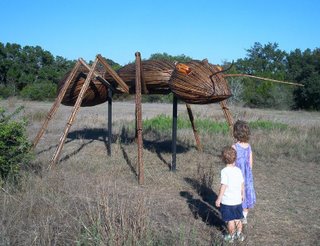So, Gayla mentioned to me in a conversation several months ago that Mexican vanilla is known to have some BAD (toxic) ingredients in it. That's what gives it it's special taste. A fellow blogger had a post since then remarking that her giant bottle of Mexican vanilla had finally been finished off, it took something like 15 years to use it all up. I mentioned in the comments that Mexican vanilla may not be all it's cracked up to be but said that I'd have to do more research before I passed on the information.
Well, tonight when we got home from watching for the space shuttle and the International Space Station to pass by in the Southwestern sky at 8:30, I decided to do my vanilla research.
Tomorrow we'll research the space shuttle and the ISS for school - find out when we'll get to see a re-entry of the space shuttle next since it looks like a ball of fire in the sky. It freaked Joe out when we saw it early one morning about 12 years ago.
Back to the vanilla. So the first link that I clicked on after Googling "ingredients in Mexican vanilla" was this place www.gourmetsleuth.com/vanilla.htm where they informed me (and anyone else who wants to read it) that "Coumarin is a the bad guy of the vanilla industry. It is derived from the Brazilian tonka bean from Dipteryx ordorata, a tree. The bean can be used to make flavoring very similar to vanilla. Sadly the concoction is dreadfully toxic and can cause liver damage and is a know carcinogen. Coumarin is used extensively in synthetic vanillas manufactured in Mexico. The U.S. banned imports of the coumarin laced products back in the 1950's. Unfortunately the products still make their way into the U.S. If you purchase any Mexican vanilla make sure it is clearly labeled "courmarin free". and "Most of the vanilla extracts that come to the US from Mexico are synthetic. The best way to determine quality is price. If you are offered a large bottle for a cheap price it is most assuredly a synthetic product. Also, real vanilla is not "clear". No matter what the label may tell you if it is clear it is synthetic. True vanilla is amber colored. Synthetics tend to be dark and murky either from the coal tar from which they are produced or from caramel and red food colorings. Mexico today still uses coumarin in much of its vanilla products. Lacking strict labeling laws as we have in the U.S., Mexican manufactured products may not list accurate ingredients. Again, purchase from a reliable source and steer clear of those large "bargain" sized bottles found all over Mexico." also "The other synthetic common in Mexican artificial flavorings is Ethyl Vanillin derived from coal tar. " EWWWW, gross!
Now don't go thinking that American vanilla is any better since "U.S. manufactured artificial vanilla is produced from synthetic "vanillin", Lignin Vanillin, which is made from a by-product of the paper producing industry. This by product is chemically treated to mimic the flavor of vanilla. The product help take care of a ecological problem with paper producers and created an "affordable" vanilla flavoring for the public. "
According to this site http://www.mexicanvanillaextract.com/ "Vanilla was discovered in Mexico by Spanish invaders. As a precious item, it constituted one of the tributes paid to Aztec overlords by some tribes. The quality of the aroma and flavor of vanilla varies with the geographical regions from where the beans are obtained, because of their vanillin content plus other factors. It is generally accepted that vanilla beans from Mexico are superior because their vanillin concentration is higher."
In conclusion, read the label to make sure that it's pure vanilla extract and buy the expensive stuff. And the Mexican vanilla DOES taste the best!
1 week ago

No comments:
Post a Comment